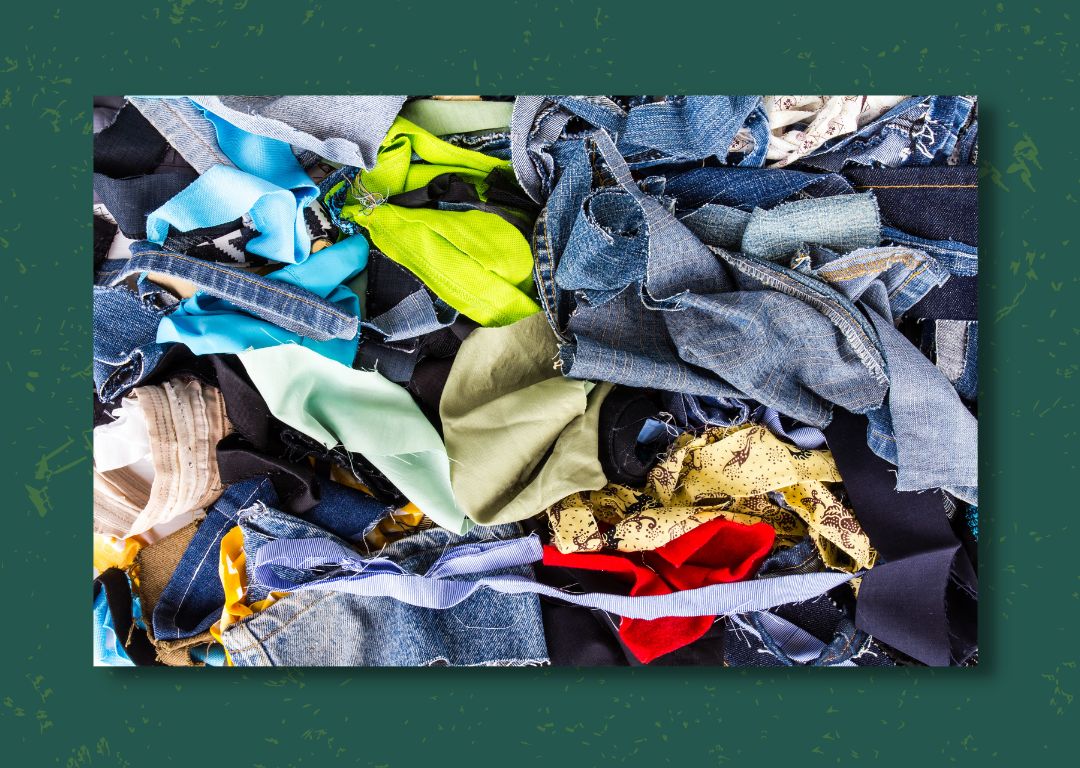
Sustainable fashion: conscious decisions and extending the lifecycle of our clothes
Clothing life cycle
In the early 1900s, people typically had only a few outfits for everyday wear, fashion trends evolved at a slower pace, and clothing was more expensive and made of sturdy materials and careful craftsmanship.
If your favorite pants or jacket were to live in those times, sadly, their life would last way longer than it does today.
As production technologies have maximized the speed of the industry, advertisements are linking our personal happiness to consumption and social media sets new trends every week (if not every day), the life cycle of our clothes has decreased dramatically.
But is there a time machine to travel back to times when you and your favorite jacket could live forever? That’s exactly what we will try to figure here by asking:
- What is the fashion product life cycle in simple words?
- What are the stages of our clothing life cycle?
- What is fast fashion?
- How to make a fashion life cycle longer and more sustainable?
- How to know that my product is sustainable and will last before purchasing it?
- What is supply chain transparency?
- How can brands achieve supply chain transparency?
What is the fashion product life cycle in simple words?
The lifecycle is the stages a piece of clothing goes through from its creation to its disposal.
The average lifecycle of our clothing varies depending on the materials, how often it is worn, and how well we take care of it. However, the average lifespan of a piece of clothing in developed countries is around three years, with many items being thrown away much earlier than that.
What are the stages of our clothing life cycle?
-
Raw material production: This involves the production of fibers such as cotton, and wool, or synthetic materials like polyester and nylon
-
Manufacturing: This stage involves the conversion of raw materials into finished textile products such as fabric, thread, and accessories such as zippers and buttons.
-
Retail: The finished textile products are sold to retailers, either online or in physical stores, who then sell them to consumers.
-
Use: This stage involves the actual wearing of the clothes by the consumer.
-
Maintenance: Clothes need to be washed and maintained to ensure they continue to look good and function properly.
- Disposal: Eventually, clothes will reach the end of their useful life and will need to be disposed of. This can be done through donation, recycling, or disposal in landfills.

(Image source: Green Business Bureau)
Let’s take a look at the example:
Cotton is grown on a farm and harvested to be used as a raw material in clothing production.
The cotton is then processed into yarn and then woven into fabric.
The fabric is then cut and sewn into a t-shirt at a clothing factory.
The t-shirt is shipped to a clothing retailer that sells it to a customer in their store or online.
The customer wears the t-shirt multiple times for a period of a few months to a few years, depending on how well they take care of it and how often they wear it.
The customer may wash and iron the t-shirt to keep it clean and in good condition. Eventually, the t-shirt may become worn out, outdated, or the customer may simply not want it anymore.
At this point, the t-shirt can be donated, recycled, or disposed of in a landfill.
And here the clothing life cycle ends.
What is fast fashion and how does it affect the clothing lifecycle?
Fast fashion defines a business model in the fashion industry that involves low-cost production, a quick change in clothing trends, and an overproduction to meet consumer demand.
The clothing is often made with low-quality materials and is designed to be worn for a short period of time before being replaced with the next trend.
Fast fashion affects the clothing life cycle in several ways:
- The production of fast fashion is often done through exploitative labor practices, with little regard for the environmental impact, and involves the use of harmful chemicals, excessive amounts of water, and the release of greenhouse gasses
- Fast fashion uses low-quality materials, therefore, has a shorter life cycle, leading to more frequent purchases and discard of clothing.
- The rapid change in the trends means that consumers are encouraged to buy new clothing at a much faster pace, leading to a culture of disposable fashion and overconsumption.

Photo by Claudio Schwarz on Unsplash
How to make a fashion life cycle longer and more sustainable?
-
Choose high-quality materials: Look for clothing made from high-quality, durable materials that are less likely to wear out or fade quickly.
Natural fibers like cotton, linen, and wool are generally more sustainable than synthetic fibers like polyester, which are made from non-renewable resources and take a long time to decompose.
-
Take care of your clothes: Proper maintenance can help extend the life of your clothing.
Follow care instructions carefully, wash clothes in cold water, air dry when possible, and avoid using harsh detergents or bleach.
-
Repair and upcycle: Instead of throwing away clothing that has minor damage, consider repairing it. This can be as simple as sewing on a button or patching a hole. You can also upcycle clothing into new garments or accessories, such as turning an old t-shirt into a reusable shopping bag.
-
Buy secondhand or rent: Consider buying secondhand clothing from thrift stores or online marketplaces, or renting clothing for special occasions. This reduces the demand for new clothing and extends the life of existing garments.
- Dispose of clothing responsibly: When clothing reaches the end of its useful life, dispose of it properly. Donate clothing that is still in good condition to charity, recycle fabric scraps, and dispose of textiles in a textile recycling bin.

(Image source: Green Business Bureau)
How can I dispose of my clothing responsibly?
- Donate to charity
- Sell or trade with friends
- Recycle through textile recycling programs
- Repurpose your clothing
- Dispose of properly: check with your local waste management facility to see if they have textile disposal options
Making sure your favorite jacket dies in dignity can help not only the environment but also those who may not have access to clothing!
How to know that my product is sustainable and will last before purchasing it?
-
Use Goon On You platform to check the brand’s rating in terms of how well it treats the Planet, People, and Animals.
-
Sustainability Certifications: Many fashion brands and retailers have sustainability certifications that provide information on their product lifecycle practices.
Examples include the Global Organic Textile Standard (GOTS), the Better Cotton Initiative (BCI), and the Sustainable Apparel Coalition (SAC).
- Supply Chain Transparency: Some fashion brands and retailers provide information on their supply chains, including the materials used, manufacturing processes, and transportation methods. This information can provide insights into the fashion product lifecycle.

(Image source: goodonyou.eco)
What is supply chain transparency?
Supply chain transparency refers to the degree to which a company provides information about its supply chain, including the sources of its raw materials, manufacturing processes, and transportation methods.
The goal of supply chain transparency is to increase accountability and trust in the supply chain and to help companies identify and mitigate risks related to social, environmental, and ethical issues
How can brands achieve supply chain transparency?
-
Traceability Systems: Traceability systems track the movement of products and materials throughout the supply chain, enabling companies to identify the origin and destination of each item.
-
Audits and Certifications: Audits and certifications assess the performance of suppliers against social, environmental, and ethical standards, and provide a mechanism for verification and accountability.
-
Collaboration and Partnership: Collaboration and partnership with suppliers, NGOs, and other stakeholders can help improve transparency and address systemic issues in the supply chain.
- Technology Solutions: Technology solutions, such as blockchain and RFID, can provide greater visibility into the supply chain and enable more efficient tracking and reporting.















